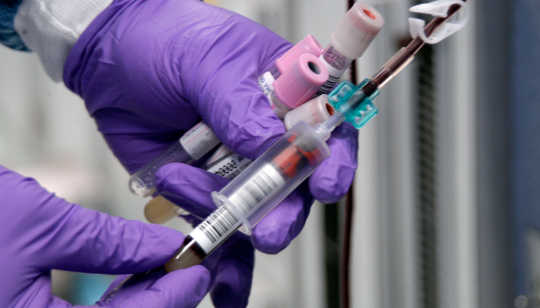
New research suggests a noninvasive blood test could vastly improve early detection rates of severe liver disease—before irreversible damage is done.
Using information collected in a liver biopsy study, researchers at Cardiff University have developed a method of determining the onset of non-alcoholic steatohepatitis (NASH) through the analysis of lipids, metabolites, and clinical markers in blood.
“Many people with non-alcoholic steatohepatitis do not have symptoms and are not aware they are developing a serious liver problem.”
NASH is the most extreme form of non-alcoholic fatty liver disease (NAFLD)—a range of conditions caused by a build-up of fat in the liver. With NASH, inflammation of the liver damages the cells, potentially causing scarring and cirrhosis.
Currently, the only way to diagnosis of NASH is through a costly and invasive liver biopsy.
“Many people with non-alcoholic steatohepatitis do not have symptoms and are not aware they are developing a serious liver problem,” says You Zhou from Cardiff’s Systems Immunity Research Institute. “As such, diagnosis often comes after irreversible damage is done.
Our quicker and less invasive method of diagnosis could mean that more people with non-alcoholic fatty liver disease could be easily tested to determine whether they are progressing to non-alcoholic steatohepatitis, the more severe form of the disease.”
A healthy liver should contain little or no fat. Estimates suggest about 20 percent of people in the UK have early stages of NAFLD with small amounts of fat in their liver. NASH may affect up to 5 percent of the UK population and is now considered to be one of the main causes of cirrhosis—a condition where irregular bumps replace the smooth liver tissue, making it harder and decreasing the amount of healthy cells to support normal functions. This can lead to complete liver failure.
Common risk factors for both NAFLD and NASH are obesity, lack of physical exercise, and insulin resistance. But if detected and managed at an early stage, it’s possible to stop both NAFLD and NASH from getting worse.
The new method of NASH diagnosis will undergo further investigation with a view to developing a simple blood test that can be used by clinicians to provide effective medical care for patients at high risk of the disease.
The findings are published in Clinical Gastroenterology and Hepatology.
Source: Cardiff University
Related Books:
at InnerSelf Market and Amazon



























